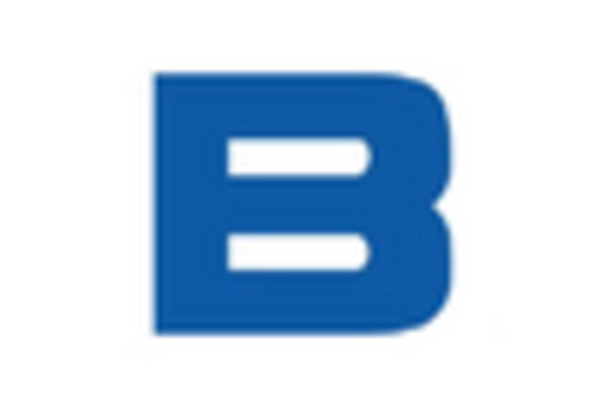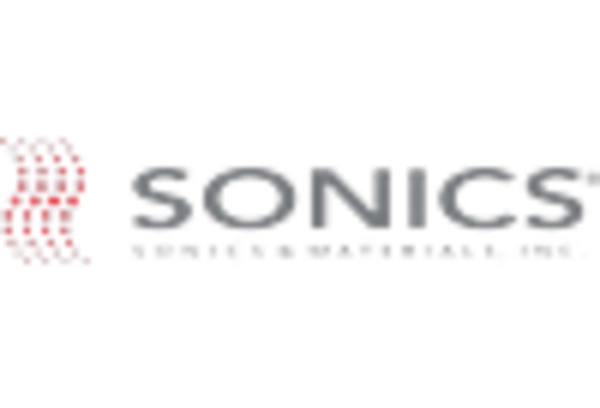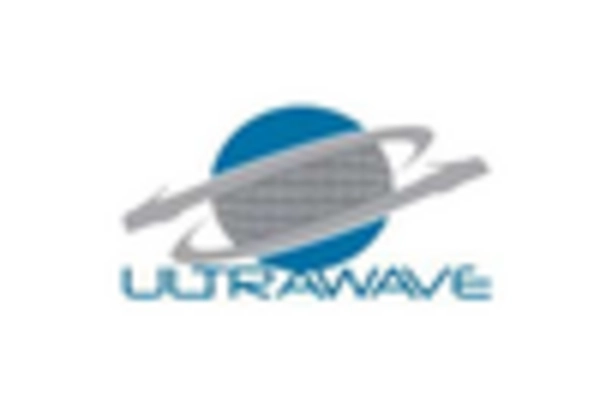Increased Focus on Food Safety
The Food Ultrasound Market is also being driven by an increased focus on food safety. Consumers are becoming more aware of foodborne illnesses and are demanding higher safety standards from food manufacturers. Ultrasound technology can play a crucial role in ensuring food safety by effectively detecting contaminants and pathogens. This technology not only enhances the safety of food products but also helps in compliance with stringent food safety regulations. As regulatory bodies continue to enforce stricter safety measures, the Food Ultrasound Market is expected to expand as manufacturers invest in ultrasound solutions to meet these requirements.
Rising Demand for Processed Foods
The Food Ultrasound Market is experiencing a notable increase in demand for processed foods, driven by changing consumer lifestyles and preferences. As more individuals seek convenience, the need for efficient food processing techniques becomes paramount. Ultrasound technology enhances the quality and safety of processed foods by improving extraction processes and reducing processing times. According to recent data, the processed food sector is projected to grow at a compound annual growth rate of approximately 5.5% over the next few years. This growth is likely to propel the Food Ultrasound Market, as manufacturers increasingly adopt ultrasound technology to meet consumer expectations for high-quality, safe, and nutritious products.
Growing Interest in Natural Ingredients
There is a growing trend towards the use of natural ingredients in food products, which is positively impacting the Food Ultrasound Market. Consumers are increasingly seeking products that are free from artificial additives and preservatives. Ultrasound technology facilitates the extraction of natural compounds from raw materials, thereby enhancing the quality and appeal of food products. This trend aligns with the broader movement towards clean label products, which is projected to grow significantly in the coming years. As manufacturers strive to meet consumer demand for natural ingredients, the Food Ultrasound Market is likely to see increased adoption of ultrasound technology to optimize extraction processes.
Emerging Applications in Food Processing
The Food Ultrasound Market is witnessing emerging applications in various food processing sectors, including dairy, meat, and beverages. Ultrasound technology is being utilized for tasks such as emulsification, homogenization, and extraction, which enhances product quality and processing efficiency. For instance, in the dairy industry, ultrasound can improve the texture and stability of products like yogurt and cheese. The versatility of ultrasound applications is attracting attention from food manufacturers looking to innovate and differentiate their offerings. As the food processing landscape evolves, the Food Ultrasound Market is poised for growth as more companies explore the potential of ultrasound technology.
Advancements in Food Preservation Techniques
Innovations in food preservation methods are significantly influencing the Food Ultrasound Market. Ultrasound technology offers a non-thermal approach to food preservation, which helps maintain the nutritional value and sensory attributes of food products. This method is particularly appealing to manufacturers aiming to extend shelf life without compromising quality. Recent studies indicate that ultrasound can reduce microbial load and enhance the effectiveness of preservatives, making it a valuable tool in the food industry. As the demand for longer-lasting products continues to rise, the Food Ultrasound Market is likely to benefit from the adoption of these advanced preservation techniques.


















Leave a Comment